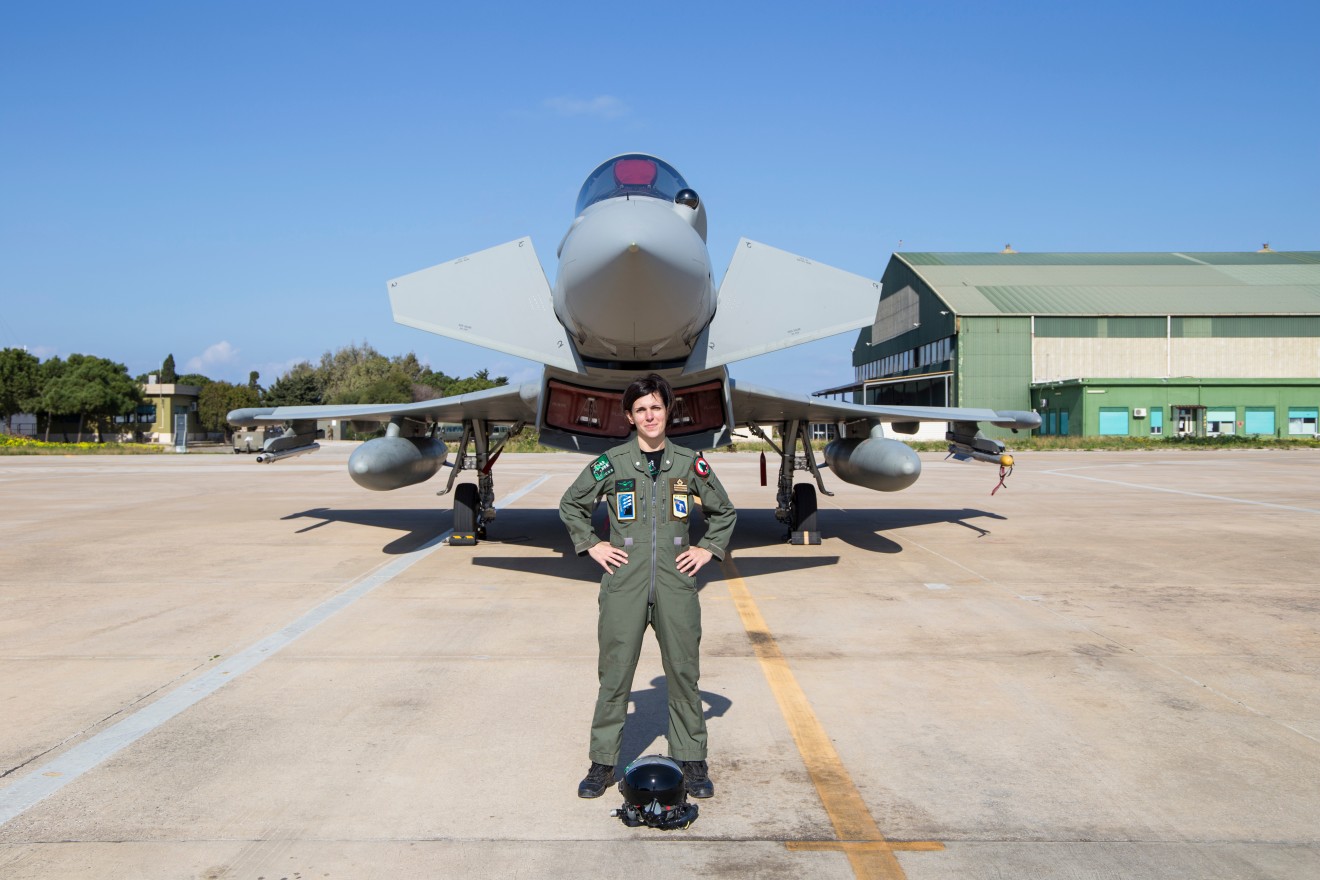Who inspired you to join the air force?
Joining the Air Force has been a dream of mine since I was a child. From my childhood home I could see fighter jets flying and this inspired my passion for flying — it just grew and grew. Seeing the jets, I could only imagine what it would be like doing such a challenging and beautiful job.
I kept this dream alive in my imagination because back then the armed forces were not yet open to females. In 2000 when they finally opened up to women, I saw a chance to make my dream come true. During my last year of High School I decided to try to join the Air Force, and applied for the Academy. This is how I took my first steps into the job I always wanted to do since I was I child.
What is your career background?
I joined the Air Force Academy in 2002. My pilot training started in the 70th Wing in Latina, close to Rome. Then I went to the Shepard Air Force Base in Texas as part of the Euro-NATO Joint Jet Pilot Training Programme. From there that I attended the Eurofighter Operational Conversion Unit in Italy before moving onto an Operational Squadron as a Eurofighter combat ready pilot.
Describe your role with the 37th Wing?
I’m a Eurofighter pilot. I also work in the Wing Operations Office that looks after the organisation of events — operational and non-operational — involving the Wing. The Wing Ops office also supports the activity of the flying squadron inside the Wing, the 18th Squadron. In fact, Wing Ops is the entry point for all the activities, exercises and operations that concern the Wing and the Squadron. Obviously, a pilot’s life is not just about flying throughout a working day, but also about taking care of an office and all the responsibilities of the role.

What are the major challenges you face?
The challenges can be looked at from two aspects — the office role and the pilot one. The main challenge from an office point of view is dealing with all the different stakeholders, both within the Wing and outside it, to make a required task happen. As a pilot, the challenge is to ensure you keep up with a platform that’s evolving and improving daily, with the implementation of new software and new armament types to get familiar with.
What does a typical week look like?
In a typical week, you don’t fly every single day, but there is a flying schedule to ensure all pilots are proficient in their role. When a pilot is not flying, we’re usually in the office, taking care of other duties. Within a Wing, a pilot can actually take care of a desk job either at the Wing Ops or at the Squadron. Flying activity doesn’t differ, because all pilots train together and are part of the operational heart of the Wing: the Squadron.
Whenever we fly a mission, we dedicate most of the working day to it. Everything starts with the planning, and then we continue with the mission briefing. It’s at this point that all the pilots taking part in the mission discuss in detail what they will do to accomplish the required task. It’s the formation leads responsibility to set the pace and brief all the elements on how they want the group to act during the mission.
Next is the flying element, and as soon as you land there is a debrief. Here we analyse how everybody on the flight performed, and whether the task has been achieved or not. We believe this is the most important part of the flight, because the formation’s lead can analyse the positive and negative elements of the mission. It’s a chance to bring out any learning points for everybody to share.
What is the Eurofighter Typhoon like to fly?
Typhoon is one of the most advanced platforms in the world. The challenge is centred on maximising the platform’s performance in order to accomplish the mission in the best possible manner. From a performance perspective, it’s one of the most powerful aircraft available. It can deliver tremendous power, making it hard to compete with in dogfight scenarios.

How does it compare to other aircraft you’ve flown?
I was assigned directly to the Typhoon right after flying school, so I can’t compare it with other fighters. I can compare it with aircrafts I’ve faced in training and I can definitely say that Typhoon, thanks to its technology and manoeuvrability, is a fundamental element in the accomplishment of a mission.
Have you been on many exercises/operations?
Taking part in exercises and operations is part of our operational life, therefore every pilot has been on many of them. We train daily so that we’re able to perform at our optimum in order to compete with the other platforms the best way we can. Being able to put on a good performance when you’re up against other airplanes becomes a matter of personal and professional satisfaction.
What attributes does Eurofighter possess that makes it suited to multirole and swing-role missions?
Eurofighter can perform these roles thanks to its avionics. The basic handling of the aircraft is taken care of by the autopilot and auto-throttles: the flight computers take information from the pilot and take care of most of the basic flying tasks. The pilot’s duty consists of crosschecking that parameters are set and are being followed in the correct manner. This allows the pilot to dedicate the majority of their attention on the on-board systems. This is one of the features that makes the platform capable of both swing-role and multi-role missions. The attention of the pilot is almost completely dedicated to the systems and to the task. In addition, the technology makes it easier, compared to some legacy platforms, to perform different types of missions within a single flight.
Photo credits: Carmelo Sucameli / 2019
